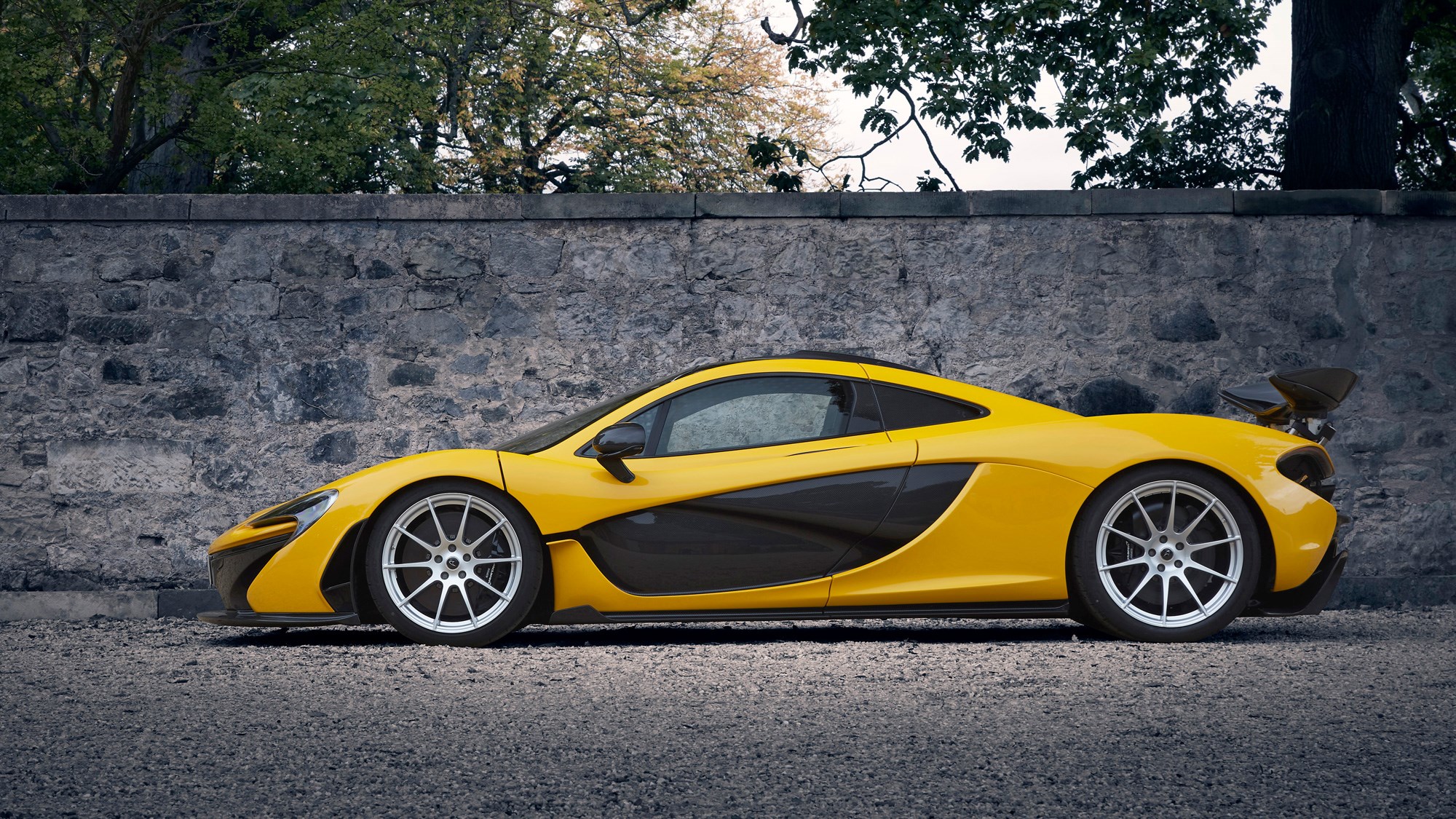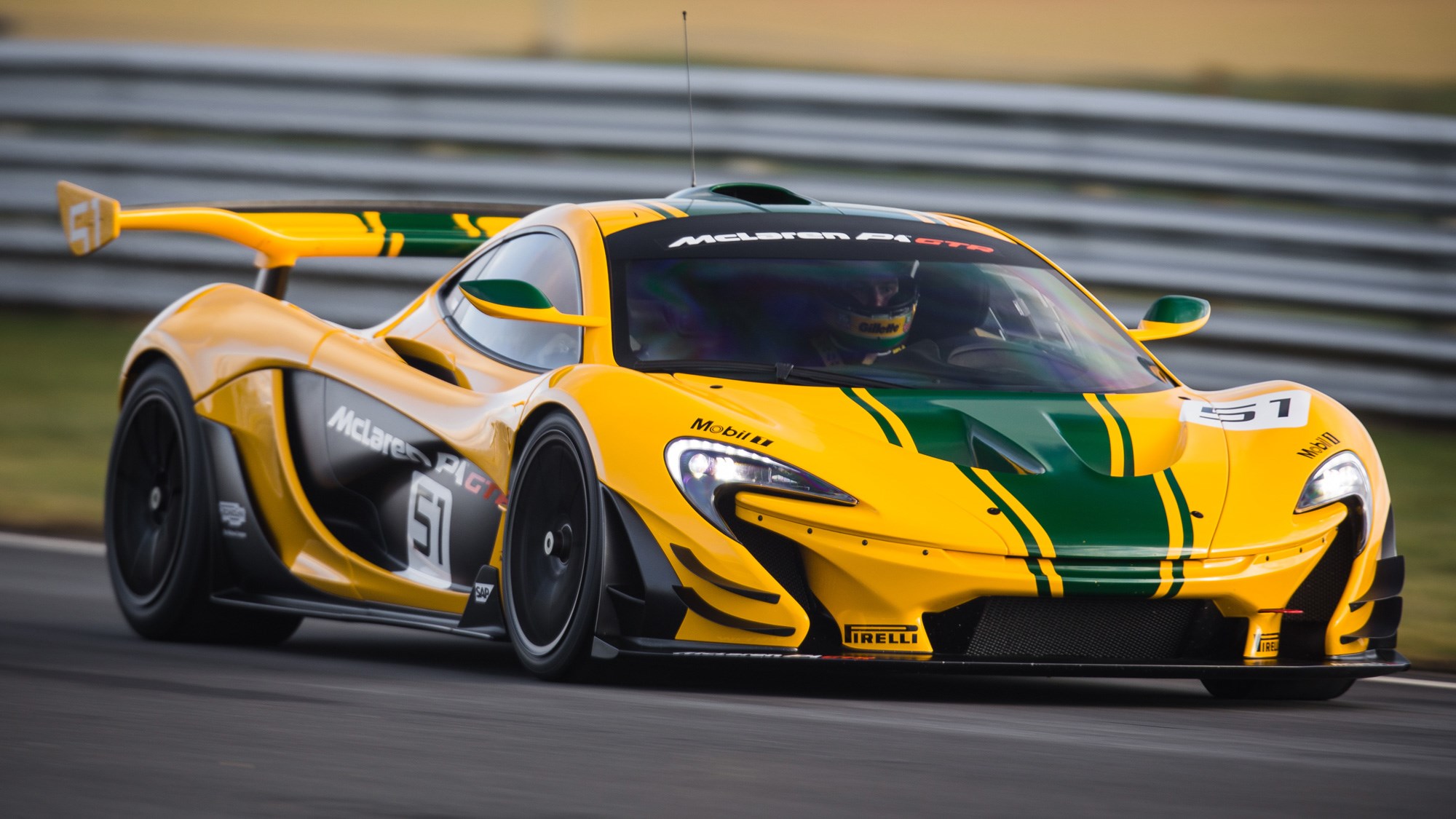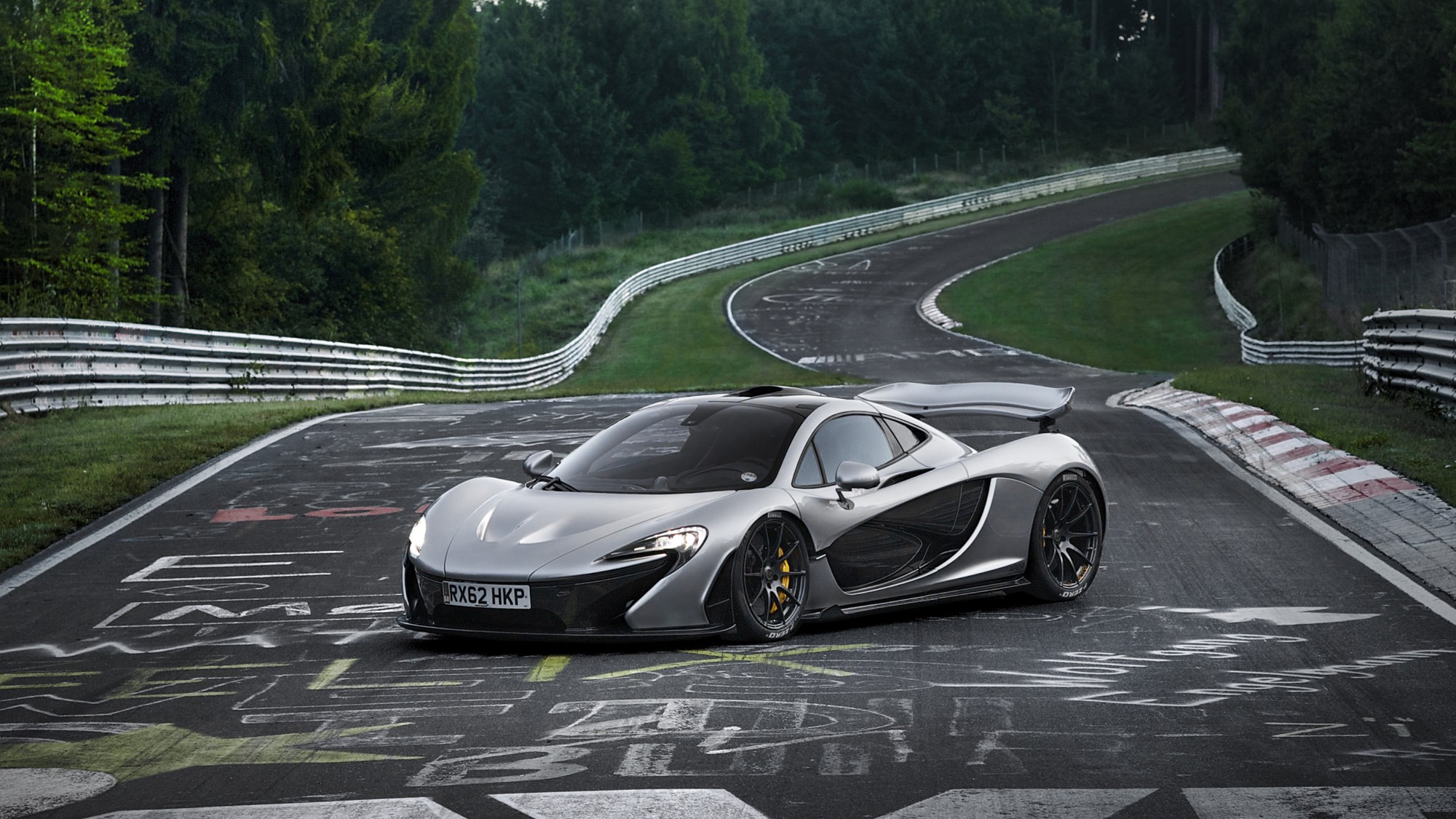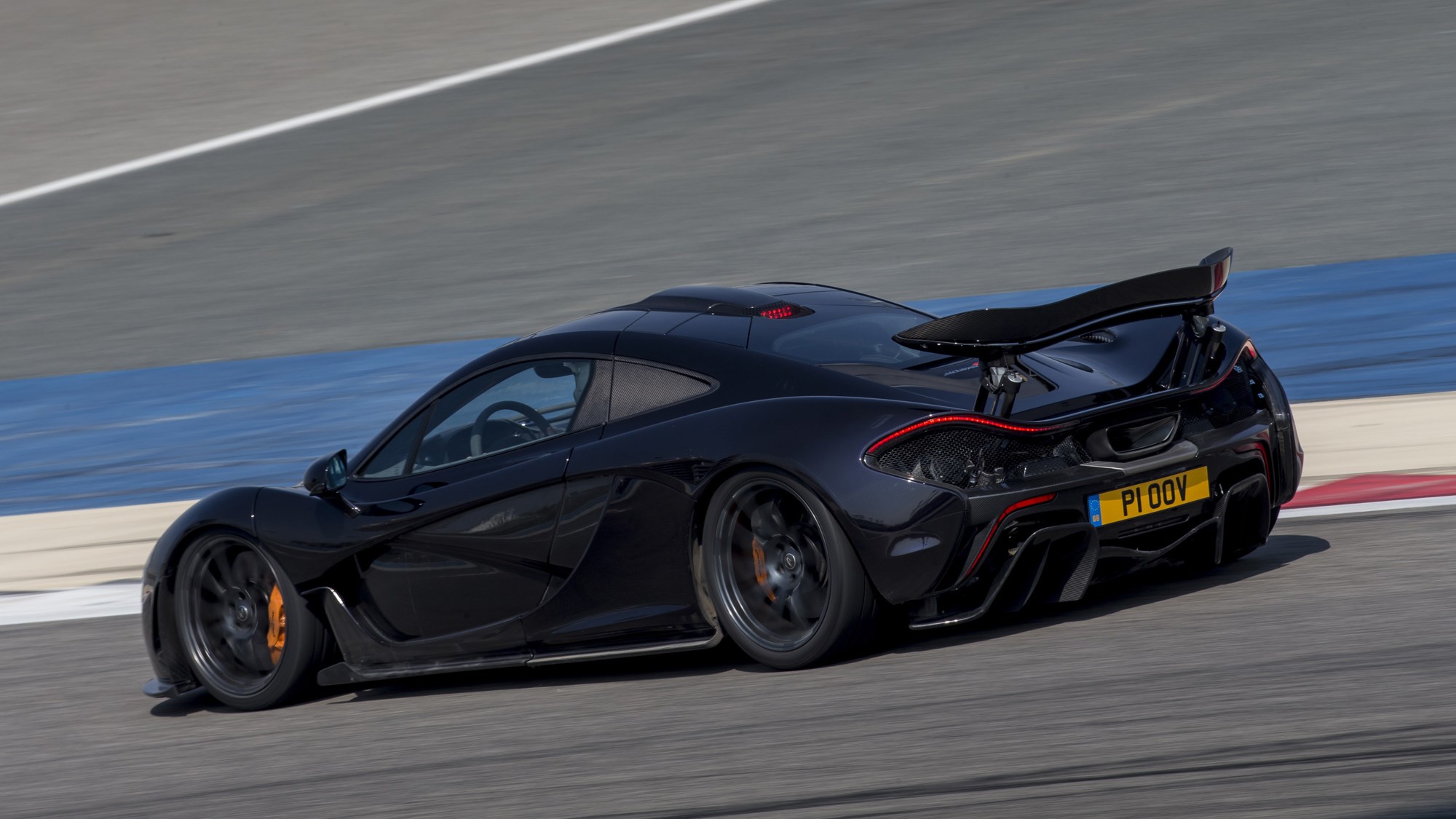► Original McLaren hybrid hypercar driven
► 903bhp, 2.8sec 0-62mph, 217mph top speed
► Details of pricing and evolution, too
Hard to believe the McLaren P1 launched back in 2013. One of a trio of hybrid supercars that transcended the term to become known as hypercars – the others being the Ferrari LaFerrari and the Porsche 918 Spyder – the P1 redefined high performance to establish itself as a genuine successor to the hallowed McLaren F1. Albeit one that relied on turbos and power-boosting electrification technology rather than natural aspirated purity.
A car for the times, then, especially now its maker is returning to the hybrid supercar formula with the new McLaren HPH project. But regardless, the P1’s status as a performance legend is forever assured – something you can read more about in Gavin Green’s McLaren P1 review below.
McLaren P1 performance and price
Built in a limited run of just 375 examples, the original version of the McLaren P1 is powered by a 3.8-litre twin-turbo V8 strapped to a single electric motor, producing a still jaw-dropping 903bhp and 664lb.

McLaren P1 top speed is 217mph, while 0-62mph takes just 2.8 seconds. More impressive still, 0-124mph takes only 6.8 seconds.
When new, the basic price of a McLaren P1 was £866,000 – though it seems unlikely any of them left Woking without any costly extras installed, particularly once McLaren Special Operations (MSO) got involved.
Now they changed hands for upwards of £1million, though an exact value is hard to pin down as each example was essentially unique. Even some of the XP (for ‘Experimental’) prototypes have found their way onto the market.
McLaren P1 evolution: GTR, LM, GT longtail and more
Because there’s never such a thing as enough for well-healed supercar clients, in 2015 McLaren evolved the roadgoing P1 into the track-only P1 GTR.

This saw power increase to 986bhp (a nice round 1000ps), weight come down to under 1400kg dry (around 1440kg kerbweight), and though the ultra-aggressive aero package knocked top speed down to just shy of 200mph, cornering speeds and circuit handling went ballistic.
The P1 GTR was only available to customers who had already purchased a regular P1, and the cost new was £1.98million. They change hands for more now.
This still wasn’t enough for some, so British firm Lanzante – which had run the original McLaren F1 racing cars – stepped in to offer a conversion package turning the P1 GTR back into a road car. This was called the P1 LM, and came with even more power and even less weight.
Five customer McLaren P1 LM cars were planned, while the P1 LM XP prototype went on to break records at Goodwood and the Nurburgring.

Lanzante then built a one-off P1 GT longtail for a particularly keen client, following that up in 2020 with a run of six Lanzante P1 GTR-18 cars that use this same longtail body and road-legal GTR underpinnings, each finished in a retro race livery harking back to the McLaren F1’s racing era.
Gavin Green drives the McLaren P1 on road and track in Bahrain
The McLaren P1, in a strange but striking black paintjob that changes to purple when the sun’s out, has been transformed into Race mode. I know because I pushed the little Race button on the bottom of the non-lacquered carbon centre console and watched on the dash display as the car magically lowered (by 50mm) and the giant rear wing extended (by 300mm). I’m now hugging the tarmac, bum snug in the carbon-framed Alcantara-trimmed race seat. I’m eye-to-eye with the Armco guardrail, eye-to-kneecap with a mechanic who stands nearby.
We’re at the Bahrain Grand Prix circuit, in the pit lane. It’s a cool but sunny Sunday and I’m about to go faster than a Formula 1 car.

I push the Launch button alongside the Race button. Then stab the brake pedal, hard. It’s instinctive to push the brakes hard, as though it’s necessary to stop the beast bolting forward. In fact, a soft but firm touch will suffice. Then I push the accelerator pedal as far as it goes and the twin-turbo V8, barely a foot or so behind my spine, its power boosted by a silent electric motor, screams and growls and thank god I’m wearing a helmet to mute the thunder going on behind.
The bar-graph tachometer comes alive. A little dash display sign comes up to say ‘launch control ready to go’, and the brakes are released. And…
Tony Bennett may have left his heart in San Francisco; I left my innards and my previous comprehension of supercar performance back in the pit lane of the Sakhir circuit in Bahrain.
So it’s fast, then?
We blast forward as though I’ve just hooked a lift with an F-16 fighter jet flying low overhead (the Bahrain Air Show is being held next door). We bolt forward with just a tiny chirrup of rear wheelspin from the big Pirellis. We catapult forward, straight and true, propelled by 727bhp of V8 twin-turbo power, supplemented by 176bhp of electric motor muscle (grand total 903bhp). The g forces make my brain scream, my tummy turn, my eyes ache. I momentarily feel very sick. My right foot wants instinctively to lift off the throttle for it is in shock. Like the rest of me.

Next time I look at the facia we are doing 100mph (in about five seconds, although I wasn’t timing), and we slow, momentarily, to do a little left-right jig out onto the main straight. A Formula 1 car will never go this fast in the pit lane. They’re limited to 50mph. We’re faster than an F1 car! Wimps.
The bald figures tell me the P1 will go from 0-62mph in less than three seconds, 0-125mph in less than seven seconds and 0-185mph in under 17 seconds. I can assure you it feels every bit that fast. Add the speed with which it can lap a racing circuit, and it rewrites everything we know about supercars. Just as the McLaren F1 did 20 years before.
On the track, the P1 is astonishing. When first I venture out on the circuit – well before our pit-lane launch-controlled getaway – McLaren test driver and racer Duncan Tappy is bravely alongside. He suggests we start our test in Normal handling mode but with the powertrain set to Track. Now, the P1 has almost as many programmes as Sky TV, so there’s a lot to choose, all selected by various rotary controls, buttons and switches. Little wonder all 375 P1 owners will get tuition on how to drive their new chargers.
Engage boost mode
Duncan suggests we initially engage the Boost button, located alongside Race and Launch. Contrary to what you may expect, this does not enrol the afterburners. Rather, it holds back most of the power from the electric engine, preserving those electro-horses for the KERS-like IPAS boost system. So, rather than start with all 903bhp, we begin our track drive with ‘only’ 727.
Now, the day before this test, I drove the P1 on the road, complete with all 903bhp. I was not going to forget that level of power in a hurry. So when we first venture out on the track, the P1’s performance seems, well, a bit weedy.

‘How does it feel?’ asks Duncan, 30 seconds and two corners into our test, over the helmet-to-helmet intercom. ‘A bit slow, actually,’ I reply, semi-serious. Duncan must have thought he had the new Senna alongside, for whom controlling 700-plus bhp was as easy as riding a bike. Or, more likely, he was sitting alongside a complete tw*t.
But when you’re used to 903bhp, 727 just doesn’t feel quite enough. It was as though our P1 had been detuned overnight.
More positively, the driving position is superb, the visibility out the front and side is panoramic, the brakes outstanding in stopping (usual for carbon-ceramic discs) and feel (not usual for carbon-ceramic discs). It feels small, wieldy, agile, a trustworthy ally in the art of very fast, controllable driving; a car shrink-wrapped around you, the driver.
Okay, that’s the ‘placid’ bit out of the way – it’s time for the fast stuff. We go into Track mode for the handling and for the powertrain. The Boost switch is off.
Track attack
There’s 903bhp under my right foot and there’s a car of such brilliant agility, predictability, comfort – yes, comfort – and throttle responsiveness; such speed; and such superb brakes and steering that the old supercar boundaries aren’t so much redefined as smashed to smithereens. Throttle response is crackerjack sharp, thanks to the gutsy electric engine filling in the torque holes that always plague turbocharged cars. The paddle shift is now instant.
No surprise that so much power makes for fast laps; the surprise is just how controllable this car is. It’s no unruly beast. Rather, it’s a friendly companion, its handling super-sharp, the steering wrist-flick precise and beautifully linear. If you step out of line – I once go into a hairpin far too fast – you can sort it all out with a bit of judicious steering correction and careful braking.

On the limit, on fast corners, the electric traction nannies give you plenty of leeway before they step in to spoil the fun. You can balance the P1 on the absolute limit, with just a touch of drift, all deliciously controlled by beautifully precise and linear steering, and a chassis that talks to you with the utmost clarity.
Naturally, you have to be careful. You’ve got 900bhp+ to command, you’re doing 150mph+ so damn easily. This is car that you have to drive. Those electro helping hands – ESC, ABS – always support, not dominate, the drive. It’s a much more hands-on car than a Nissan GT-R or a Porsche 918 Spyder.
McLaren shunned four-wheel drive, despite all that power and torque, to prioritise feel over outright tyre-pawing grip. It’s a better driver’s car for it, if not necessarily a faster one.
Wanna race?
Time for the real fun. I pull into the pits, and push the Race button. This is an extraordinary switch, the equivalent of employing a team of mechanics to change the spring rates, reduce the ride height, attach a bigger rear wing and change the gear ratios (gear changes are now even faster). In fact, the P1 does it all for you, at the push of a button.
I’m now hunkered low to the ground. I can see that vast wing in the rear-view mirror. I’m in max-attack mode, in a sports racing car. Except I have rather more power to play with than in any GT3 car, and I have active aerodynamics. That big rear wing and little underbody flaps continually and magically change angle to maximise grip. I feel magnetised to the tarmac.

Want more? Fine, hit the IPAS button on the steering wheel – KERS in Formula 1 speak – and all 176bhp of electro-power is instantly unleashed, and the world’s fastest road car on the track goes into afterburner hyper mode and fastest becomes even faster. I can feel the kick.
Faster again? Okay, engage the other maximum entertainment button on the steering wheel – the DRS – and in the rear-view mirror I can see the big carbon wing turn horizontal. To be honest, I didn’t feel much difference. You have to be going 170mph+ to feel it, says chief test driver Chris Goodwin.
What’s the P1 like to drive on the road?
I now need to rewind our tale to one day earlier. It’s raining and cool, British weather in Bahrain. I’m about to drive the P1 for the first time, on the road. The surface is covered in water (like British roads) and has a fine layer of wet sand blown in from surrounding desert (unlike British roads). These are not great conditions to drive a 903bhp rear-drive car.
Project director Paul Mackenzie is stoically sitting alongside. We drive, initially, in Normal mode (handling and powertrain), the suggested (and default) programme for most road use. The ride comfort is good; the automatic gearchange (though you can swap to manual) is executive-car smooth. The seats are comfortable. Low-speed driving is easy without any of the wearying roar and unyielding firmness and askew seating of so many Italian supercars. Don’t push the accelerator too far and you could be in a BMW 3-series, except the P1 has a better driving position.

We try electric, engaged by pushing the E-mode button. It’s eerily quiet, incongruous on a car with a twin-turbo V8 on board and cannon-sized exhausts. Performance is now like a warm hatchback, 0-60mph in about nine seconds.
We swap to Sport. I stab the throttle, a towering inferno of noise and power erupts behind, the rear Pirellis break traction – 903bhp is clearly too much for the traction control – and we fishtail on the silt-strewn road. I briefly contemplate the horror of being the first person to write off a P1. Fortunately we’re soon pointing straight and true and Paul Mackenzie is still my friend.
In many ways, the road capability amazes even more than the track excellence. Its comfort, refinement and sheer ease-of-driving on the road is extraordinary. The 12C-derived, roll-bar-free, active suspension is partly responsible.
McLaren P1: the CAR verdict
I can’t imagine too many P1 owners using them as everyday transport tools, not at £866,000 each. But this really is a car that can play Golf GTI in the city and GT3 racer on the track.
There’s never been a car so fast, so thrilling, so deliciously rewarding to power and manipulate around a track. There’s never been a car that offers such an astonishing breadth of capabilities.
Just as they did with the wonderful F1 road car, the men from McLaren have once again redefined the supercar.
